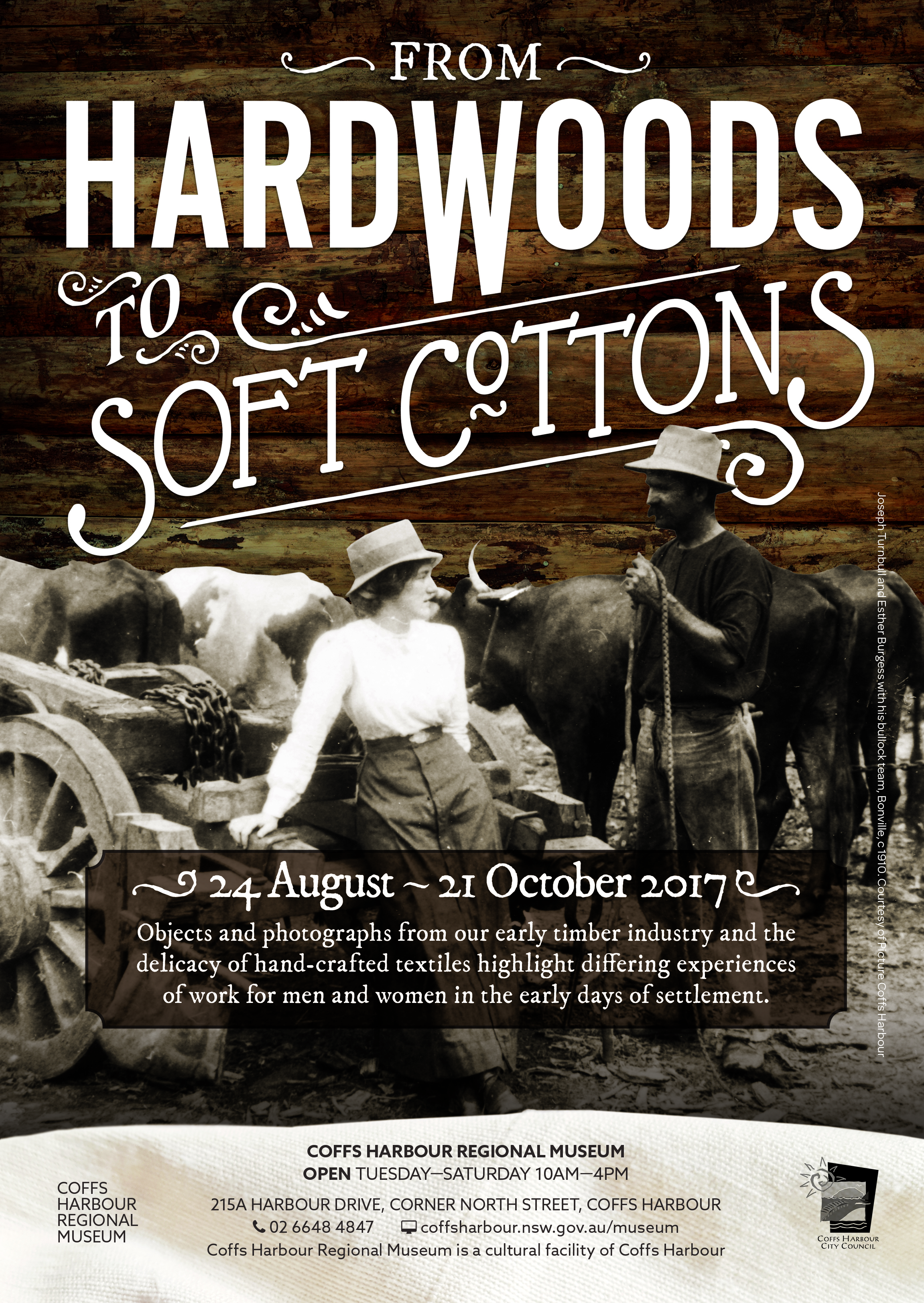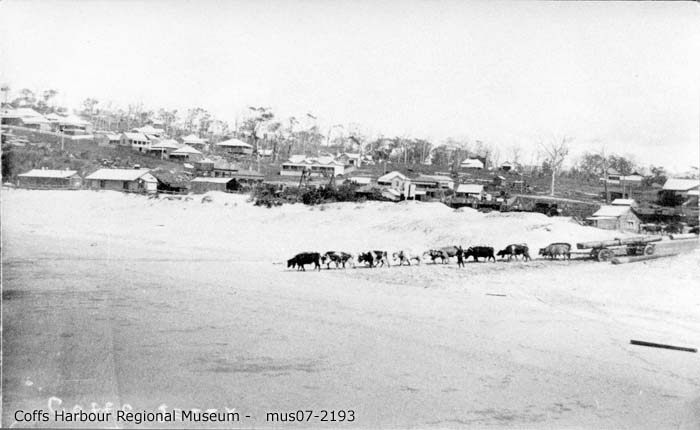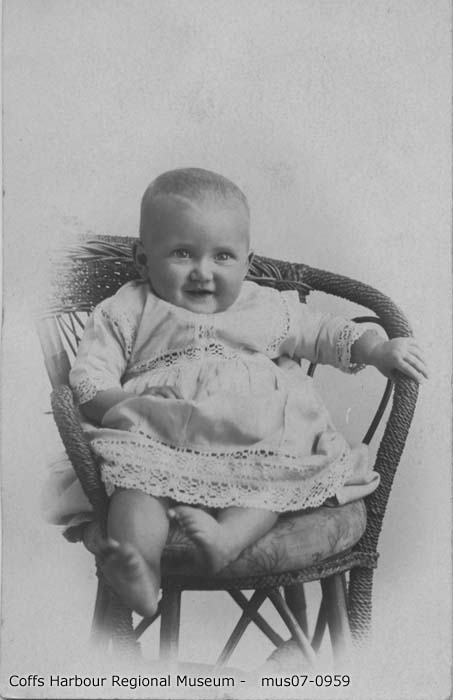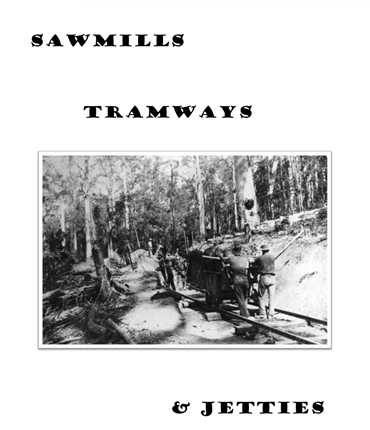
By guest writer Jo Besley, Curator, Coffs Harbour Regional Museum & Regional Gallery
The new exhibition at Coffs Harbour Regional Museum features tools of the timber trade and hand-crafted, household textiles from the museum’s collection to recall the earliest days of settlement in the district.
Timber was the Coffs Coast’s first colonial industry. Timber-getters arrived here from the 1860s, seeking cedar – “red gold” – a tree of the mahogany family highly prized for its rich red appearance, warm grain and workability. It grew plentifully in the subtropical rainforests of New South Wales and from the 1820s cedar-getters moved up and down the coast, hauling it out of remote gullies, making rafts of logs and floating them to the coast. It was an opportunistic pursuit requiring little more than an axe, some bullocks and kit – and a great deal of muscle. Fortunes could be made if the conditions were right but given the remoteness of the Coffs Coast from major settlements, it was a tough way to make a living.

There were no roads – just rough bush tracks and the ocean beach – and the only communication was via ships that stopped at river heads to collect the cedar, bringing supplies with them. Many of the cedar-getters were itinerant single men, moving from district to district, denuding the forest of its riches. Others came with their families looking for a place to settle. A common pattern was for a selector to arrive first as a timber-getter; then after they’d cleared the land they would begin farming. Women took part in these activities too, planting crops and tending gardens, while also creating homes with whatever materials were at hand or that could occasionally be bought. Clothing and domestic items were usually handmade and repaired constantly to last as long as possible.
In the 19th century, domestic sewing was strongly associated with femininity and was a primary duty for women in maintaining their family’s welfare, as well as a recreational pursuit for many. Class was a factor, with working class women doing “plain needlework” and utilitarian tasks, while middle and upper class women spent their time on fine embroidery and fancywork. These types of households were rare in Coffs Harbour; most women in the early days were living in tents or rudimentary huts, with few creature comforts.

Clothing supplies were sparse and took months to arrive. The few local stores stocked just basic fabrics such as cottons, calico and canvas, so women depended on hawkers who came by intermittently to buy haberdashery and drapery. The exquisite hand-sewn and detailed items on display show the care that women took to clothe their families and furnish their homes, even in the most difficult of circumstances.
From Hardwoods to Soft Cottons is on at the Coffs Harbour Regional Museum, corner of Harbour Drive & North Street 24 August – 21 October 2017. CHRM booklet Sawmills, Tramways & Jetties is also available from there. 
Skip to content
Coffs Coast Heritage
